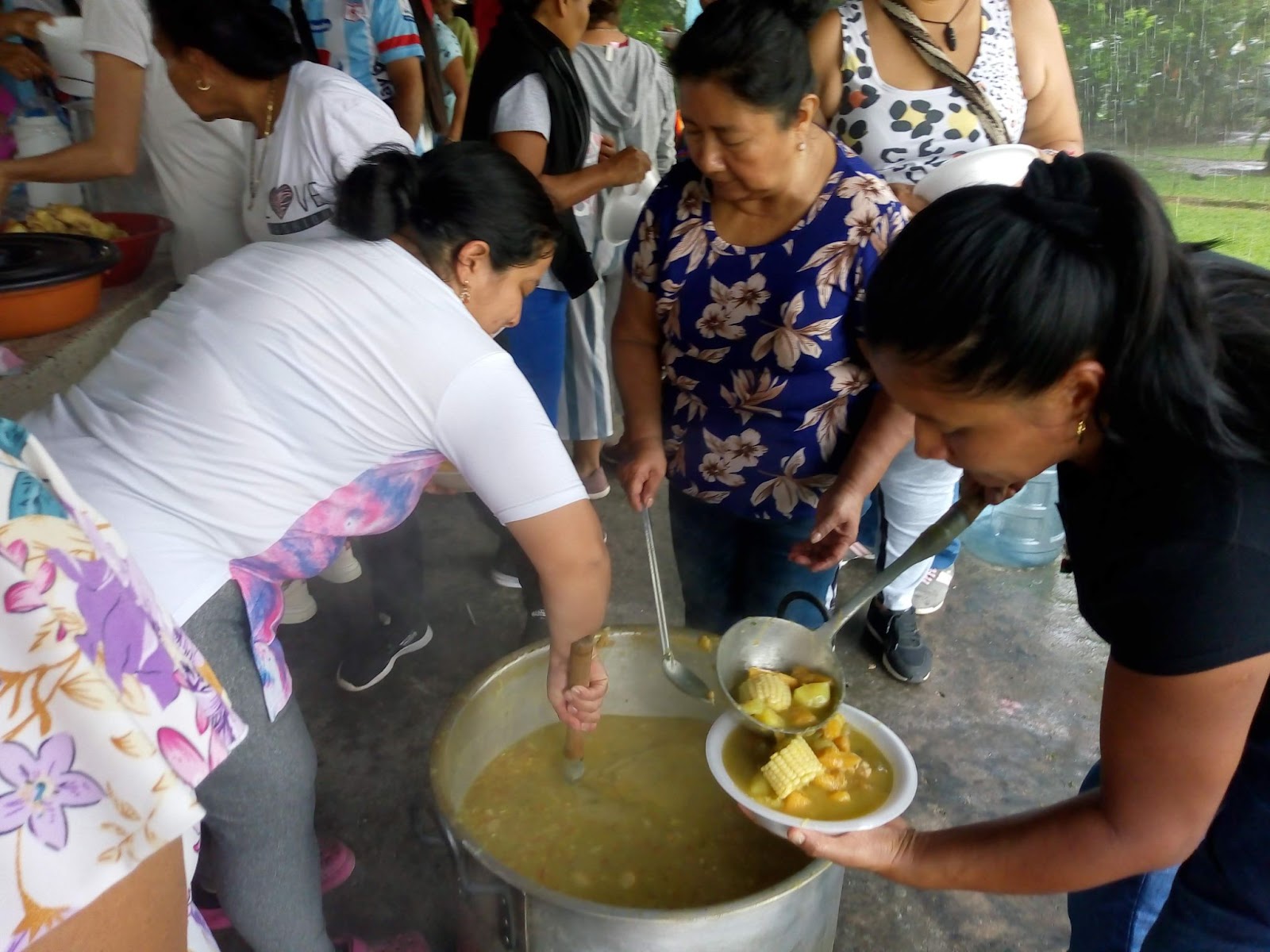
The Emberá Chamí students live near the school in a multi-ethnic settlement called “Paraíso de Paz.” Since their ancestors arrived to the territory due to displacement, the elder members noticed that their descendants were beginning to lose aspects of their culture, such as crafting, gastronomy, and native stories and tales.
First, they listened to an elder of the community and some stories of the community. Then they started to collect memories and tales from other elders of the community. Later, they designed and published a blog with the data they had collected and shared it with the leaders of the community.
With resources from a Ciena Solutions Challenge Sustainability Award, students have continued this initiative to recover cultural aspects that are at risk of not being passed down to the next generation, including a recovery of the Emberá Chamí gastronomy.
“I contribute to many things. I loved cooking all my life, and now my daughters and granddaughters [do], too. I contribute to the children… I can teach them to learn gastronomy and learn about our indigenous communities’ values.” – Dioselina Gañan, Emberá Grandmother
Parents and grandparents have joined students to continue recovering their ancestral roots by teaching their crafts. Additionally, in 2023, they established a partnership with the ICBF (Instituto Colombiano de Bienestar Familiar – Colombian Institute of Well-being Family) to grow commercial crops and fishing to help the economy of the Indigenous community.
An idea that started in the classroom has led students to get involved with their community and support each other while they relearn their Indigenous customs together; they have told their stories and have learned to cook their native recipes. Indigenous students have changed the way they perceive their culture, reflecting on the respect that they have for their elders and giving importance and credibility to the knowledge and wisdom that grandparents and ancestors have transferred to them.

“My grandmother taught me to cook estacas with Mote Maize. It is wrapped in Cañabrava leaves. Lenguifrios are also wrapped in Biajo leaves. My grandmother made them during the holy week and since we couldn’t cook during that week, we ate them for breakfast. I teach all those recipes to my granddaughters and other teenagers.” – Amparo Bueno, Emberá Grandmother
One of the greatest accomplishments working with the Emberá Chamí indigenous community was that all legends and recipes they collected were posted online, and people from different countries have visited our blog and now know about the rich tales and gastronomy of this indigenous community.
When parents and teachers realized that students were spending a lot of time on their cellphones and were not interested in listening to the tales of their grandparents and elders, or learning their ancestral recipes, we saw an opportunity to motivate the young people to promote and deepen their connection to their cultural heritage. Not having digital material available on the internet about their Indigenous community was not only a problem, but also an opportunity to inspire indigenous teenagers to become leaders and young researchers so that they could contribute to their community.
“I learned the gastronomy of our grandparents; I liked the tales: the stories and the legends. I enjoy sharing with my friends and telling them the stories and tales.” – Juan Pablo M., 9 years old.
“The gastronomy was interesting because it gives to the young people knowledge and culture about the food.” – Johanna P., 15 years old
“From the gastronomy I learned to cook a little bit. And about the tales, I learned to tell some of them to my classmates”. – Yonfer M., 13 years old

For those who want to carry out their own research-based projects in the classroom, I want to tell them that it is important to see in problems that there is an opportunity to investigate and find solutions. Involve students. Give them responsibilities and the chance to create their rules and choose their roles. Make them feel that they are important in the whole process and give them the floor. Taking teamwork and community into account can ensure the success of any project.
Saka Buma [A greeting that means “How are you?”]… I want to share our experience with the projects we did thanks to the support of Digital Promise […] The first one was research about historical and traditional tales from our community. Our children had the opportunity to be in touch with the oral tradition through the elders. They have transmitted tales to reinforce the culture and the knowledge of our indigenous children inside our organization.
This helped us to think in our community from other perspectives and priorities. For instance, we continued our project, this time using gastronomical knowledge. We had the opportunity to get the younger people close to the older generations because we could establish strong relationships between grandchildren and their grandparents through the recipes and gastronomy practices that our indigenous community possesses.
This second project has helped us to see our community as a whole and reinforce the Arti crafts.
This third phase seeks to promote community craftwork, using the same method: from elders to children.
We are grateful for these kinds of projects that have permitted us to establish a cultural prevalence in our community and give importance to the old generations.”
-Edison Guapacha, Emberá Chamí Governor